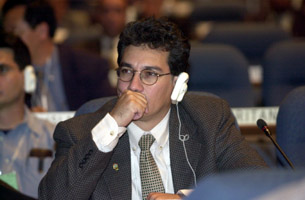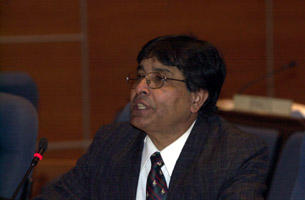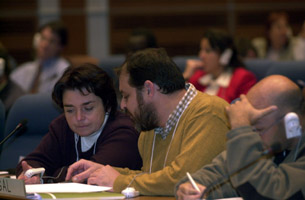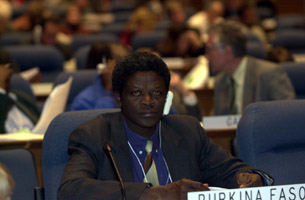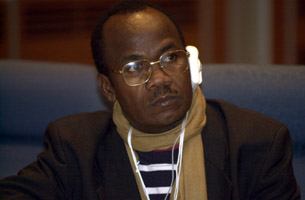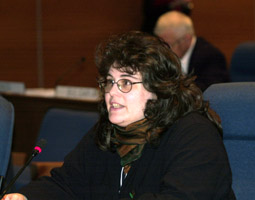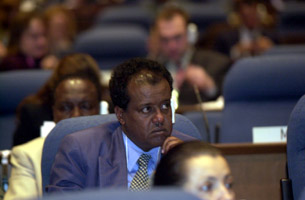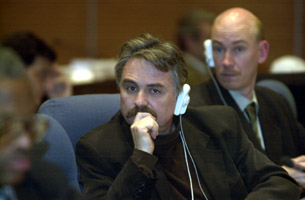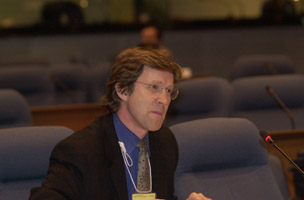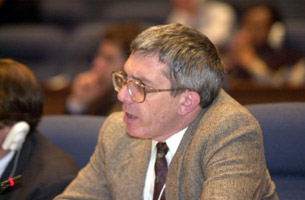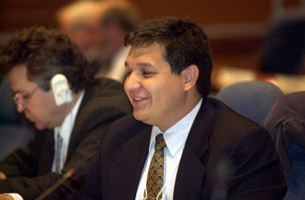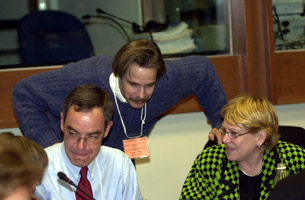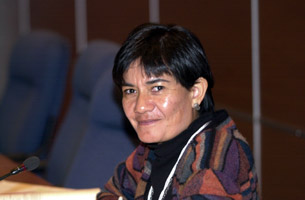|
7th
Meeting of the Subsidiary Bodies for Scientific, Technical and
Technological Advice (SBSTTA) of the Convention on Biodiversity
(CBD) |
||
|
|
||
| Highlights for Wednesday, 14 November 2001
|
. |
|
|
||||||||||||||||||||||||||||||
|
|
||
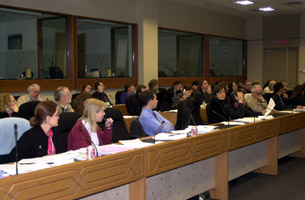
|
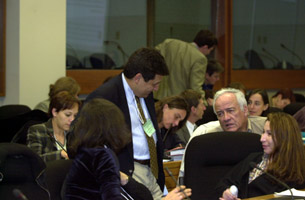
|
|
| Photo above L-R: Delegates filled the room to capacity during the contact group on forest biodiversity; delegates from GRULAC in a huddle during a break in the contact group. | ||
|
WORKING
GROUP I |
||
| FOREST BIOLOGICAL DIVERSITY: | ||
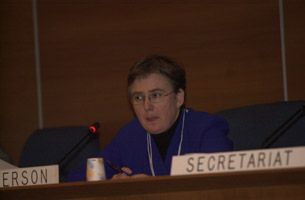 WG-I Chair Paula Warren (New Zealand) (right) reported on the contact group, noting: agreement on examining goals, objectives and activities, as well as implementing actors, timelines and process targets; an emphasis on sustainable use; and consideration of benefit-sharing under enabling activities. |
||
|
|
||
|
|
||
| ASSESSMENT AND MONITORING: | ||
|
|
||
|
|
||
|
|
||
| ENABLING ENVIRONMENT: | ||
|
Regarding illegal logging, BRAZIL (below right) suggested including illegal exploitation, trade and consumption of timber, non-timber resources and genetic resources. |
||
|
BOLIVIA (near right), noted that legal systems not ensuring sustainability would be of limited significance. |
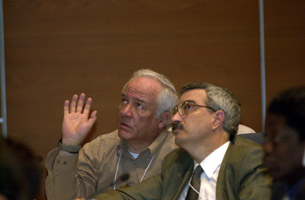
|
|
|
|
||
| BUSHMEAT: | ||
|
|
||
|
|
||
|
WORKING
GROUP II: |
||
| INCENTIVE MEASURES: | ||
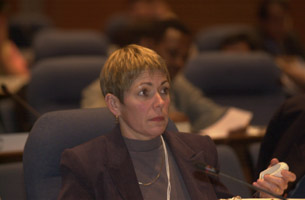 CANADA (left) reviewed the workshop on incentives for the conservation and sustainable use of biodiversity (October 2001, Montreal), presented the workshop's proposals for design and implementation of incentives and suggested recommendations for further cooperation. Most delegates welcomed the proposals and recommendations. |
||
|
|
||
|
|
||
| INDICATORS: | ||
|
|
||
|
|
||
| ENVIRONMENTAL IMPACT ASSESSMENT: | ||
| The Secretariat introduced a document containing draft guidelines for incorporating biodiversity considerations into EIA and strategic environmental assessments (SEA). | ||
|
|
||
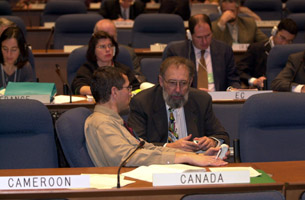 CANADA (left) called for involving indigenous people, incorporating traditional knowledge and forwarding the discussion's results to the Working Group on CBD Article 8(j). |
||
|
|
||
|
|
||
|
|
||
| © 2001, IISD. All rights reserved. |
|



